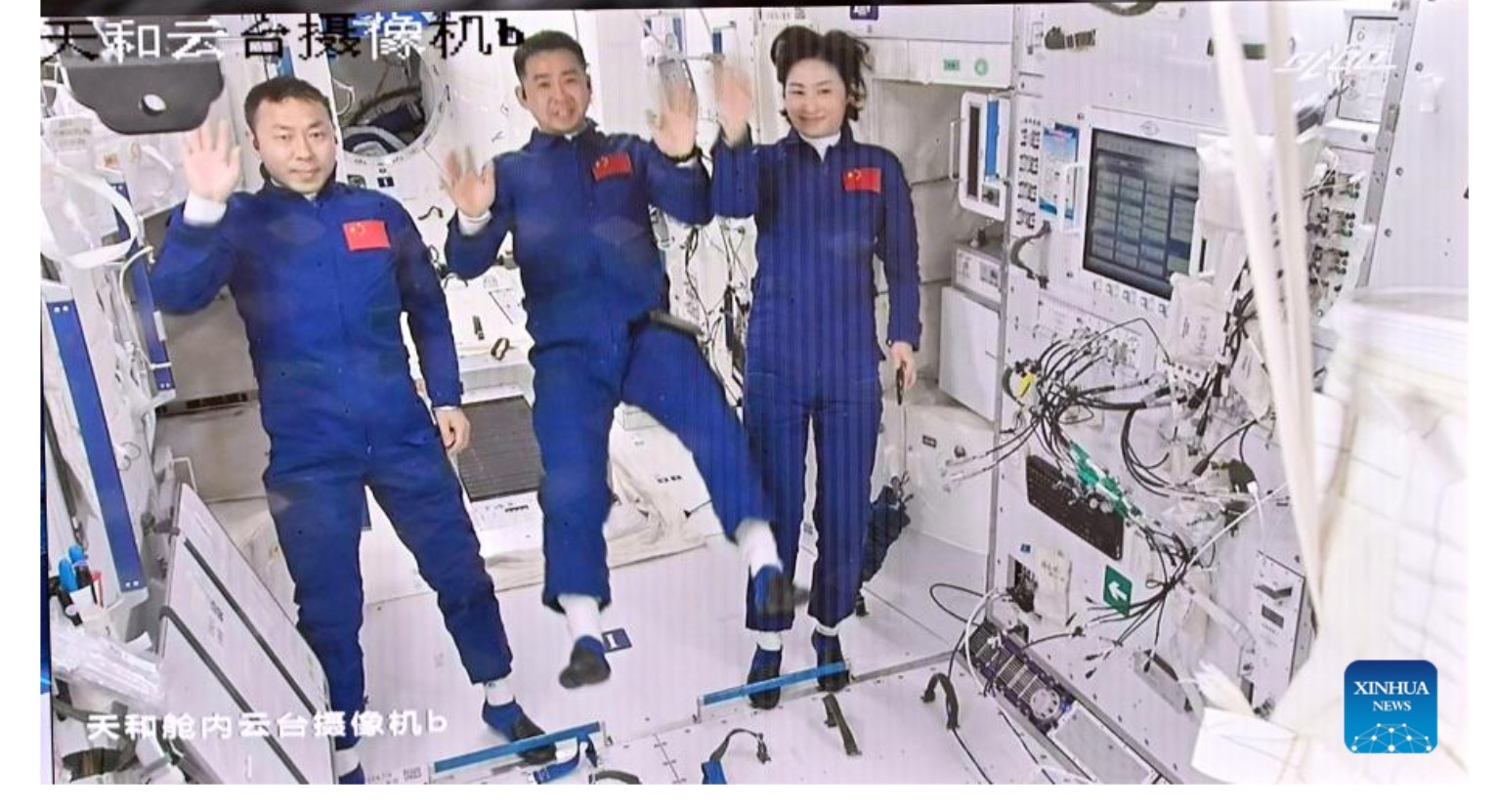The Shenzhou-14 mission, carrying three Chinese astronauts, docked successfully earlier this week with the Tiangong-3 space station. During their six-month mission on board the station, the new crew hopes to continue work on construction of the orbital Chinese outpost, which will be about one-fifth the size of the International Space Station.
China’s Manned Space Agency (CMSA) hopes to finish construction of Tiangong by the end of 2022. Later this year, they will launch two new modules – one in July and the second scheduled for October – which they say will expand their research capabilities in microgravity and life sciences.

The first module, the Tianhe core module of the Tiangong (“Heavenly Palace”) space station was launched in April of 2021. This third-generation habitat builds on the experiences learned from the Tiangong-1 and Tiangong-2 stations, which have since been deorbited, burning up the atmosphere. The Tianhe Core Module (“Harmony of the Heavens”), will be combined with the addition of the Laboratory Cabin Modules (LCMs). These consist of the Wentian (“Quest for the Heavens”) and Mengtian (“Dreaming of the Heavens”) modules.

The new crew consists of Chen Dong, Cai Xuzhe, and notably, Liu Yang, the first Chinese woman to fly to space in 2012 during the country’s Shenzhou-9 mission. That mission also included the first Chinese crewed space docking.
The crew will conduct several EVAs in support of the station’s construction.
Source: Xinhua
Lead image caption: Screenshot captured at Beijing Aerospace Control Center on June 5, 2022 shows three Chinese astronauts, Chen Dong (C), Liu Yang (R) and Cai Xuzhe, waving after entering the space station core module Tianhe. (Xinhua/Li Xin)

